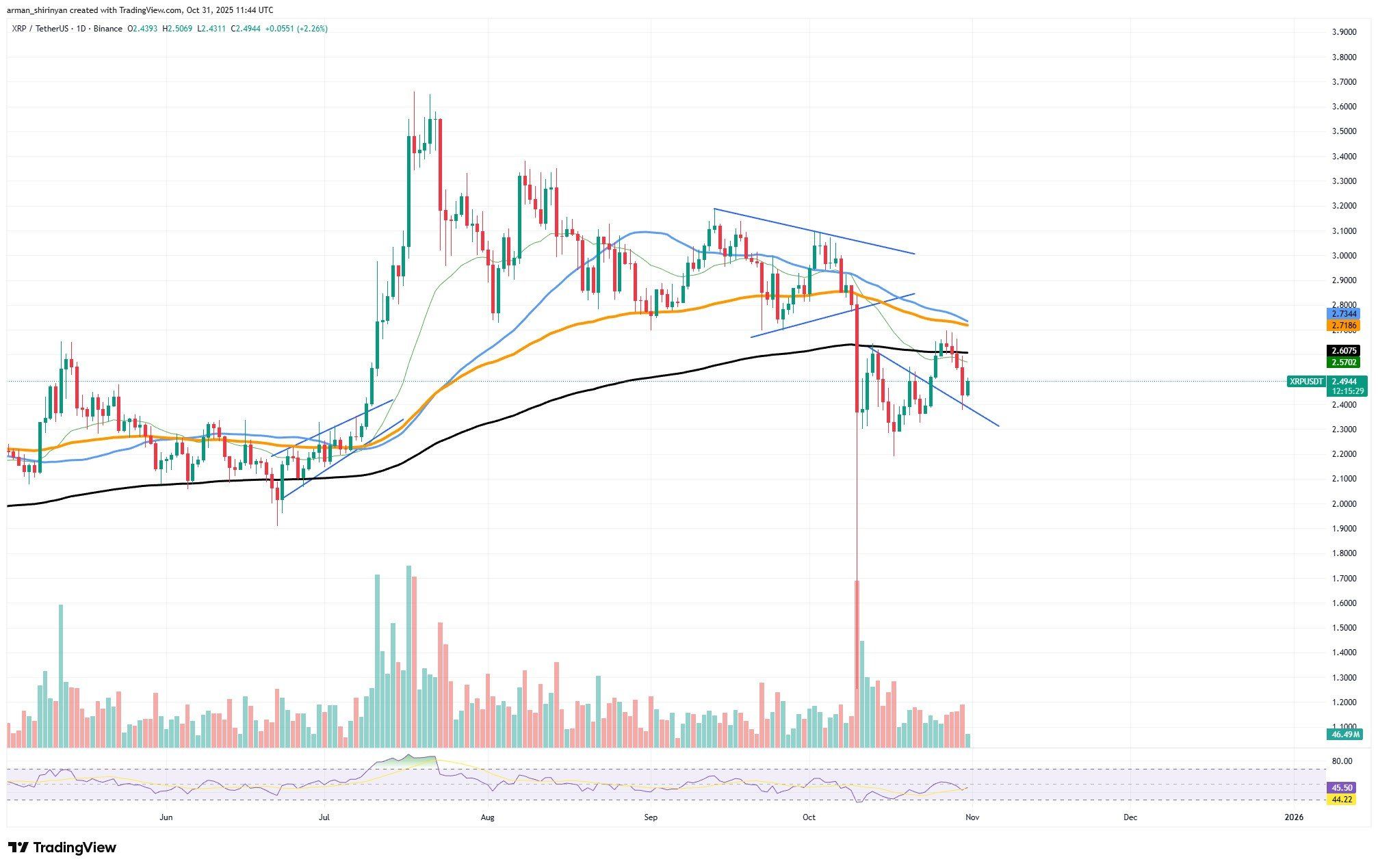XRP's Key Metric Shows 700,000,000 Drop: What Could It Mean?
This week, XRP’s on-chain activity has suffered greatly. Recent data shows that payment volume, a key measure of network utility, has dropped by almost 70%.
XRP transfers between accounts have drastically decreased, according to metrics, from over 700 million daily transactions at the beginning of October to about 230 million by the end of the month. The network demand and the general perception of Ripple’s ecosystem are called into question by this sharp decline in transactional flow.
Payment volumes drop: Expectations
The drop in payment volume points to either a short-term slowdown in remittance or institutional activity, or a more widespread drop in organic usage, as the token tries to recover its market share. Periods of price stagnation have historically been accompanied by prolonged declines in XRP’s on-chain metrics, and the current situation appears to be no exception.

Technically speaking, XRP is currently trading at about $2.49, just above short-term support but still below significant resistance levels indicated by the 100-day and 200-day moving averages, which are at about $2.78 and $2.81, respectively.
Bearish sentiment prevails
There is still bearish sentiment present on the asset, as it recently tried to break out of its descending wedge but was unable to hold above the trendline. The RSI at 45 indicates that momentum is still weak, even though it is in a neutral position and leans slightly toward bearish territory.
A noticeable slowdown in on-chain throughput may limit XRP’s upside in the near future. The $2.40-$2.35 area is still important as short-term support for the time being; if it is lost, there may be another correction toward $2.10 or even lower if selling pressure increases.
Regaining $2.80 with a verified breakout, on the other hand, would be the first indication of a recovery and a resurgence of network demand. The network may be undergoing a period of adjustment following speculative overuse earlier in the month, which could explain the steep drop in transaction activity.
But investors should anticipate a period of consolidation or slight correction before any significant recovery occurs, as both technicals and on-chain data are warning of caution.
Disclaimer: The content of this article solely reflects the author's opinion and does not represent the platform in any capacity. This article is not intended to serve as a reference for making investment decisions.
You may also like
LUNA - Drops 6.73% Over 24 Hours as Market Faces Widespread Decline
- LUNA fell 6.73% in 24 hours, marking a 78.95% annual decline amid broader crypto weakness. - Analysts attribute the drop to macroeconomic factors and lack of project-specific catalysts. - Backtests show limited short-term recovery after sharp sell-offs, with 30-day returns showing 24% excess gain. - Market uncertainty persists as consolidation phases and volatility remain key risks for long-term holders.
Hong Kong’s Approach to Stablecoins Connects Cryptocurrency with Practical Applications
- Hong Kong's HKMA demands stablecoin issuers prove "strong use cases" for licensing, prioritizing real-world utility over speculation. - Stock Exchange rejects DAT conversions for listed firms, citing investor protection risks and regulatory gaps in crypto structures. - Ant Group, JD.com, and Fosun file trademarks in Hong Kong, leveraging its bank-grade stablecoin rules and licensing clarity. - Hong Kong's framework mandates full collateralization and redemption mechanisms to tie stablecoins to economic a

